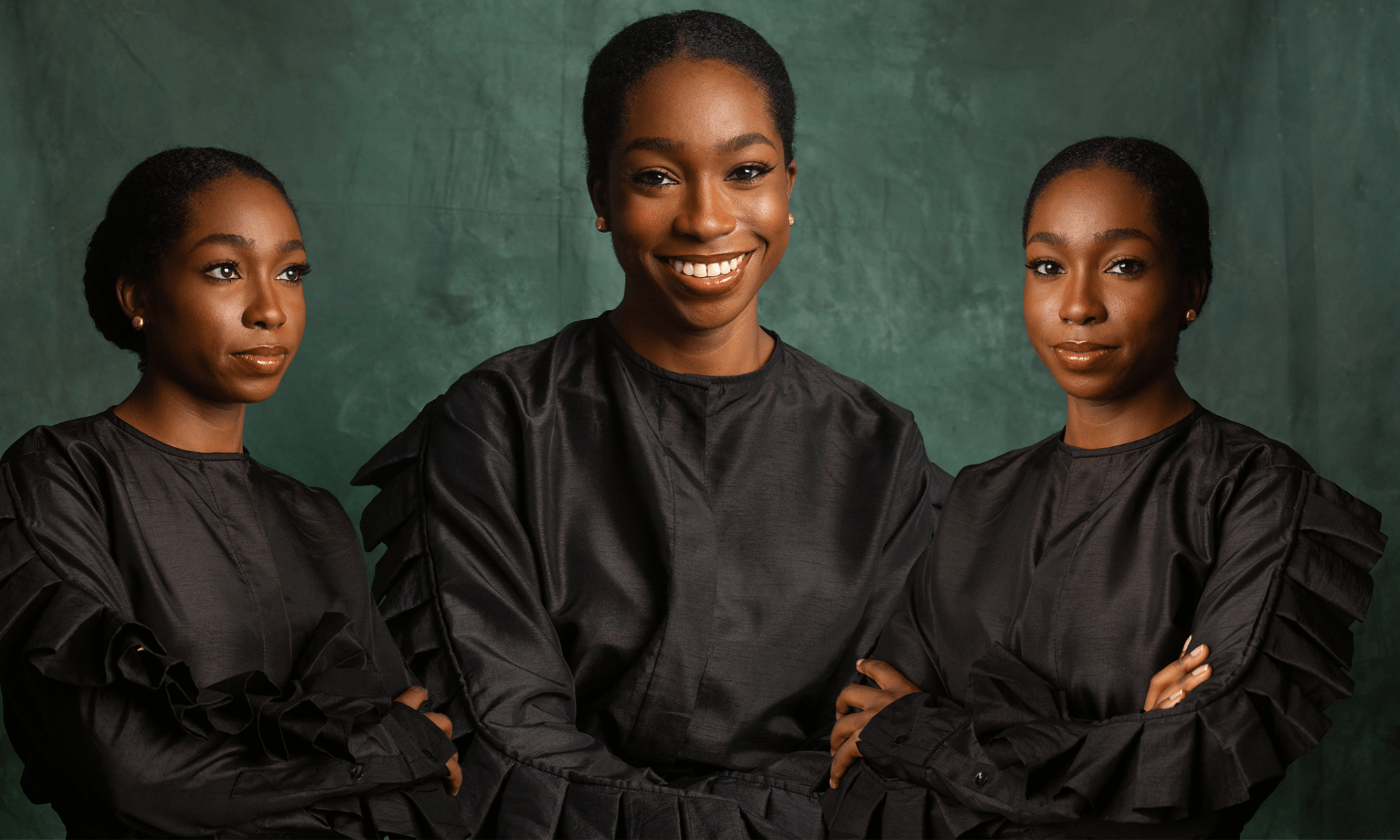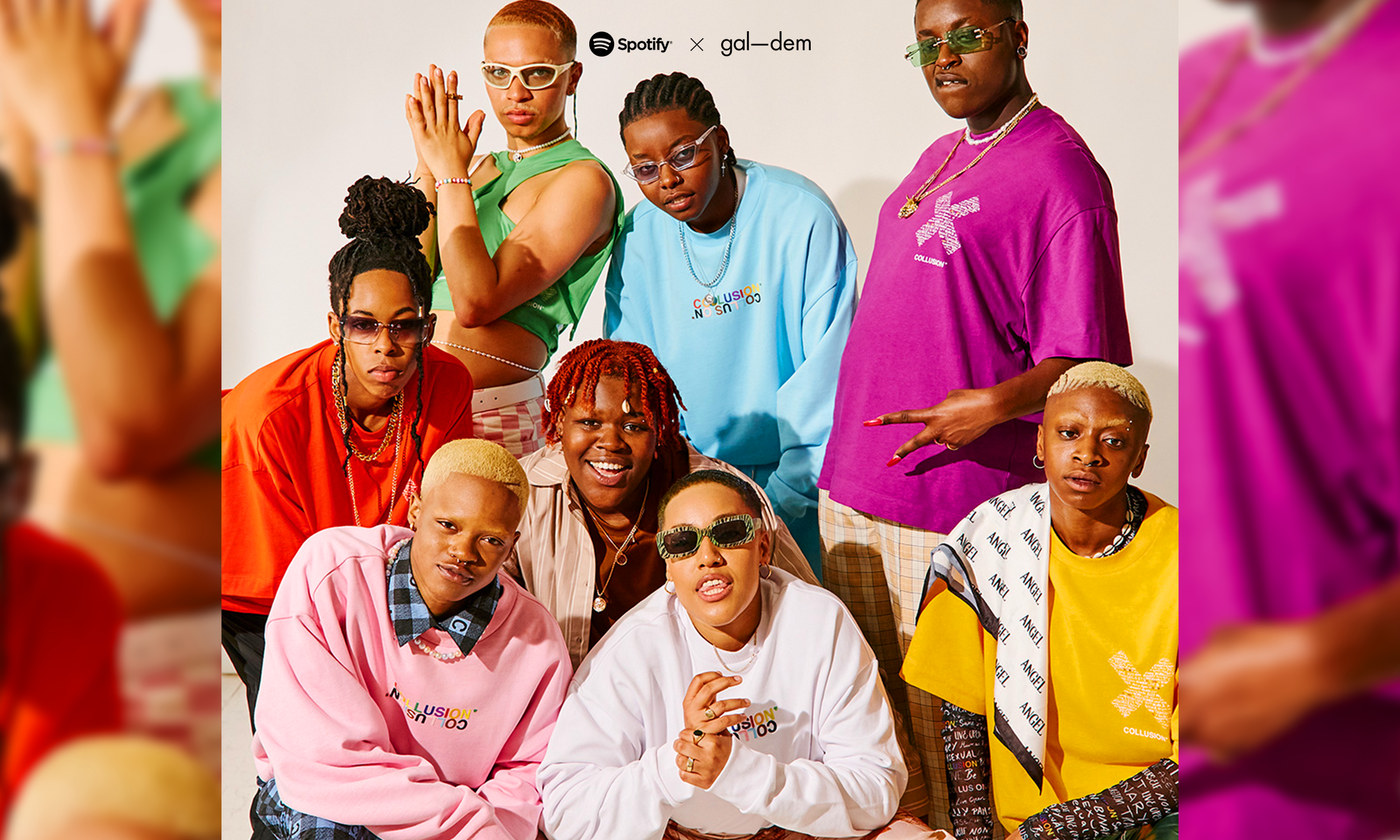Decoding ‘The African Desperate’: we explore five of the film’s key references
Dive into the real-life experiences, musical stylings and cinematic references we discovered in Martine Syms’ The African Desperate.
Sabrina Fearon Melville
27 Oct 2022
Supported by MUBI.
A satirical look at life in art school, Martine Syms’ feature film The African Desperate (TAD) tracks a Black MFA (Masters of Fine Art) student’s last 24 hours at her largely white university. Through Palace Bryant, played by real-life artist Diamond Stingily, director Martine pulls back the curtain on the glamour of art school.
A coming-of-age film at its core, we see Palace struggle with her long-term and immediate future. There’s a house party that everyone wants her to attend, but she’s over college and her friends just don’t seem to understand. And as for what life holds afterwards? She’s not sure, but heading back home to face the reality of caring for her unwell mother beckons. Before she can wave goodbye to her art-school self, though, she has her final assessment to get through.
TAD is Martine’s first feature film for cinema and sees her look inwards, drawing on her own art college experiences, as well as those of her co-writer Rocket Caleshu and star Diamond. The isolation, desperation and, yes, microaggressions that come with being *the* Black person in an almost exclusively white space clearly shape TAD, but it is rich with other references, too. From stylised depictions of drug-taking, to classic teen movie motifs and a soundtrack of sonic mishmashes, here are five fascinating references we discovered while watching the film.
The creators’ real-life experiences in the art world
When we join Palace at the start of the film, she’s being assessed on her final project by a handful of white professors. Despite the fact that Palace’s works are being showcased at Venice Biennale – one of the largest contemporary arts festivals in the world – the examiners are not convinced. That much is clear from the overly pretentious way in which they question Palace’s work and the nature of her three years of study. Their speech is full of overused adjectives and guff – though they name-drop Black creatives like poet Fred Moten, whose work is steeped in critical theory and Black culture, they still seem determined to dismiss Palace.
At one point a professor tells her, “From my vantage point, there are a lot of female artists, your age, your generation, your race that are making a lot of sculptures like this.” Existing in this white space, where her knowledge, skill and talent are minimised, forces Palace on the defensive.
The hallmarks of classic coming-of-age movies
Homages to the classic teen and coming-of-age movie are ever-present in Martine’s debut. Its 24-hour format has drawn comparisons with beloved teen movies like The Breakfast Club, while Martine has noted the influence of two of her favourite films Friday and La Haine, both of which can be interpreted as unconventional coming-of-age movies. TAD takes the 24-hour format and uses it to reflect on college life, from a Black perspective.
In TAD, Palace’s fellow student Fern is the typical teen movie mean girl. She is used by Martine to show how, even despite her talent, Palace is still yet to be wholly accepted by her peers. Fern and Palace argue later in the film about Palace’s career trajections – the former even suggests that Venice Biennale isn’t even that big of a deal. We quickly understand that Palace can’t escape the experience of being othered, even in her final hours at college.
Palace doesn’t want to and probably shouldn’t attend the party – she leaves to go home the next day – but, as in so many teen and college movies, the pull of the party (and the not-so sensible choice) is irresistible. She somehow finds herself there, seeking out her sort-of love interest Ezra throughout the evening, culminating in a car face-off that subverts our expectations.
In scenes that call to mind one of the best-known and most-quoted teen movies, we see Palace interacting with her friends via phone. They pop-up on the screen in an additional frame, immediately throwing the viewer back to Mean Girls when Regina chats with her minions on a three-way call.
Genre-defying music that speaks to Martine’s eclectic taste
It’s no wonder that music is key in TAD. Director Martine is not only a DJ, the host of an NTS radio show, and has named music as inspiration for her art, but she’s also in a band called Aunt Sister, which features heavily on the film’s soundtrack. As well as showcasing Martine’s own musical prowess, the soundtrack introduces us to some obscure, genre-blending and genre-bending picks.
“Music also gives us a window into the micro-aggressions Palace navigates in the art-school space and how white people relate to Black culture”
TAD’s soundtrack, like the film itself and much of the director’s art, is a community affair. There’s a track from Colin Self called ‘Quorum,’ which features clips from a real life video call between Martine and Diamond interspersed over beats. But Martine also uses the soundtrack to support the film’s coming-of-age theme and reflect Palace’s mindset. Songs like Quavius’ ‘Can I Be’ clue us in to Palace’s struggles and feelings of uncertainty. The lyrics “All I need. All I Need. Money tree. Family. Find a spot where I can breathe. My mind at ease. Can I be? Can I be?” point to Palace’s post-assessment emotional state, as well as the strangeness of the space between graduating and the big wide future ahead.
Music also gives us a window into the micro-aggressions Palace navigates in the art-school space and how white people relate to Black culture. At the party, she’s accosted by her professor who asks if she listens to popular music and if she’s ever heard of Lil Uzi Vert. The implication is she would and should know of him because he’s Black and a rapper. Martine uses the soundtrack to refute this stereotypical idea. Yes, it includes rap and RnB, but there are many other genres too, including those which have been categorised in direct opposition to stereotypical ideas of what is ‘Black music’, like a Fall Out Boy track – a nod to Black emos.
Meme culture and its IRL impact on Black people
Martine takes a multi-sensory approach to her cinema – memes and digital art pop up throughout the film, giving us insight into Palace’s state-of-mind. The memes used are taken from Martine’s archive and were made during her own time at college. Though they only flash up on screen quickly, the recognisability of the memes in TAD help viewers to hold onto and relate to the emotions in the scenes they are being shown.
By using the memes to show us flashes of Palace’s inner world, Martine also highlights how so much of meme culture co-opts the interiority of Black people, most often Black women, for consumption. Meme culture then shapes expectations of how Black people should act, as Martine noted in a Screen Slant interview: “Throughout the film, there’s kind of a push on interiority and exteriority and how maybe sometimes Black women are – people desire a kind of performance from them, whether that’s of happiness, or sadness, or anger, [or vulnerability].”
Stylised depictions of drug-taking in cinema
The film’s hazy drug-fuelled party scenes give us hints to Martine’s cinematic influences. We see Palace overindulge to the point where even her friends are asking her to take it easy. Martine uses hallucinatory visuals to take us inside the chaos of Palace’s trip, to make us live it with her. Palace’s experience is translated beautifully on-screen by a rush of colour, almost aura-like in nature, surrounding cast members as Palace staggers around the halls of her college looking for her friends.
It calls to mind films like Fear and Loathing in Las Vegas and Requiem for a Dream, which Martine has named as influences, where similar effects are used to show the brain-bending, reality-distorting effect of party drugs. But, as Kemi Alemoru noted in her gal-dem interview with Martine, the film subverts the cautionary-tale trope in which Black characters rarely interact with drugs and escape unscathed. Here, Palace takes a cocktail of substances and is left with nothing other than the unpleasant comedown/hangover you might expect.
The African Desperate offers us a view of art school as an elaborate pretence. It’s crystal clear that this is yet another space that Black women have come to feel othered in, where they are seen as a commodity, they may make great art, but they will still remain largely unseen. But Martine and her co-collaborators never lose their humour as they critique. Ultimately, this film is about how Palace survives art school, how she finds enough joy, beauty and laughter in the ugliness to make it through.
The film’s setting of Upstate New York, especially in scenes late in the film where it’s juxtaposed with a monologue on racism, sum up this approach. Acknowledging the reality of the racism, the discomfort, the loneliness of her art school’s location doesn’t mean Palace can’t also enjoy its beauty, can’t find community and connection there, as we see during her joyful river swims with friends. The film ends with Palace’s homecoming – she has lived through art school, she is a master of fine arts, and the future awaits her.
The African Desperate is now streaming exclusively on MUBI. Watch with 30 days free at mubi.com/galdem
The contribution of our members is crucial. Their support enables us to be proudly independent, challenge the whitewashed media landscape and most importantly, platform the work of marginalised communities. To continue this mission, we need to grow gal-dem to 6,000 members – and we can only do this with your support.
As a member you will enjoy exclusive access to our gal-dem Discord channel and Culture Club, live chats with our editors, skill shares, discounts, events, newsletters and more! Support our community and become a member today from as little as £4.99 a month.

How Nigeria’s Feminist Coalition became a force for change

Meet six change-making groups this International Women’s Day

New year, new reasons why I won’t focus on losing weight






